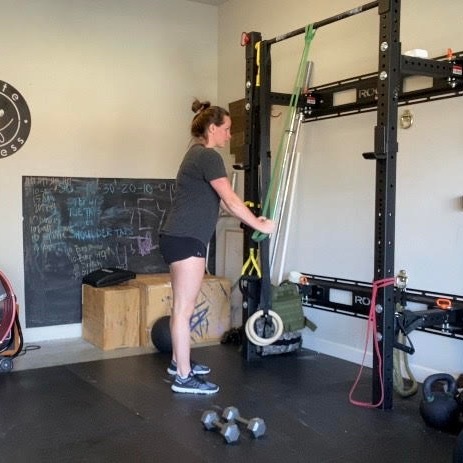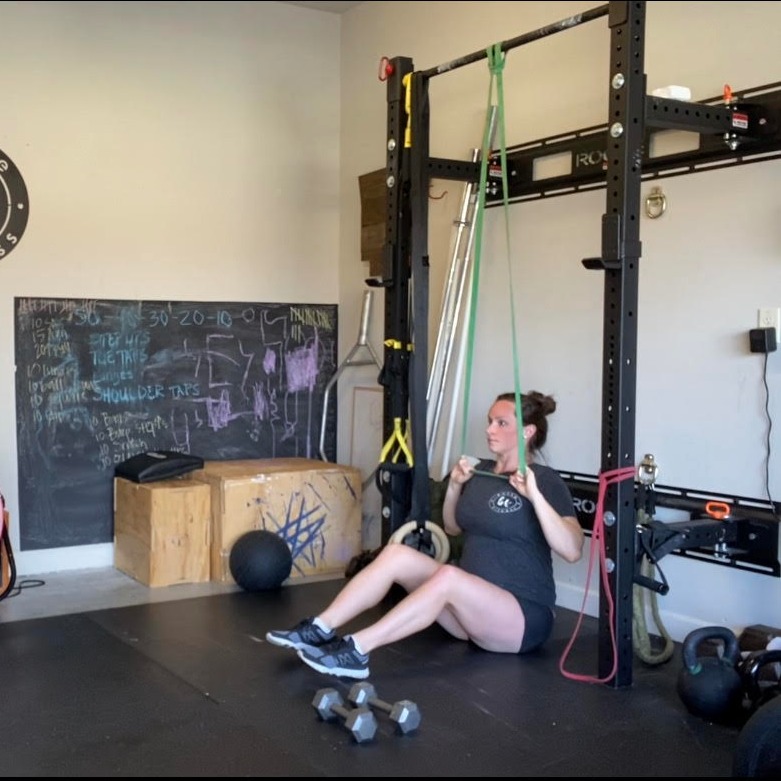Safe Exercises During Pregnancy: Should You Do Pull-ups?
- annaboltefitness
- May 25, 2020
- 3 min read
Updated: Nov 29, 2024
“Can I do pull-ups while pregnant?”
This is a question that I get asked about often from women who are uncertain about what exercises are safe during pregnancy and to whether or not they are appropriate to do during pregnancy. Pull-ups (including strict, banded, kipping, butterfly, muscle ups, etc.) are a pretty demanding movement that require a lot of strength and coordination to perform well.
For many (read: the majority of) women, there will come a time when performing pull-ups, and the above mentioned variations, may not be the most appropriate exercise to continue during pregnancy. Because pull-ups are such a demanding movement, they can place a lot of strain on your core and pelvic floor.
Although you are using a lot of upper body strength in a pull-up, your core/abdominal muscles are having to do a lot of work as well. One common symptom that is often noted in pull-ups during pregnancy is coning of the abdomen. Coning is a sign that your intra-abdominal pressure is being directed outwards into the linea alba (the tissue between your rectus abdominis aka your “6 pack” muscles) and not managed well.
This can become an issue as it will stress that tissue that is already vulnerable during pregnancy. Continuing to do exercises that cause coning, doming, and pulling sensations in the abdomen can lead to a greater diastasis recti (this is a natural occurrence during pregnancy where the linea alba thins and stretches out [a separation greater than 2cm], but it can cause issues for some women if not managed well).
In addition to the strain that pull-ups (and the other variations) can place on your abdominal wall, they can also stress the pelvic floor. This is especially true if you are dropping out of the pull-up hard or performing kipping, or another higher impact variation. The higher impact of dropping to the extension (bottom) part of a pull-up can direct that pressure downwards, stressing the pelvic floor more than it already is in pregnancy.
So how do you know if it’s time to put a pause on pull-ups?
It will vary from woman to woman as far as when she should put a pause on pull-ups. One woman may be fine continuing them well into the second trimester when another woman may need to stop later in the first trimester.
Here are a few things to “listen for” when considering if it’s time to take a break from pull-ups:
Coning or doming along the midline of the abdomen
Pulling sensations in the abdomen
ANY amount of unintentional leaking (urine or feces)
Pelvic pain or pressure
Heaviness or a bulge feeling in the vagina
Pain during or after exercise (back, hips, pelvic, belly)
If you experience any of these symptoms, you can try adjusting the strategy you are doing to see if that helps, or you can choose another exercise.
Remember that this won’t be forever, just for now and it can really help set you up long term!
What can you do instead?
The great thing is that there are many great options for substitutes for pull-ups. Here are just a few of my favorites:
Ring rows
Banded straight-arm pull-downs
Banded lat pull-downs (seated or kneeling)
Banded supine straight-arm pull-downs
Bent rows
Bent reverse fly
These are just some options of exercises you can use as a substitute; get creative to maintain versatility in your training.
As a reminder, just because you can still do pull-ups at 30+ weeks pregnant, it doesn’t necessarily mean you should. The rewards rarely outweigh the risks to your core and pelvic floor. There are many different ways you can maintain your strength during pregnancy without placing more stress on your body.
Want more info on how you can navigate symptoms, exercise, and your journey? Fill out this form to schedule a FREE call with me to discuss how you can get better guidance with exercise and managing symptoms in pregnancy!







